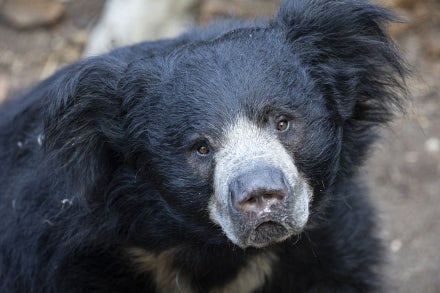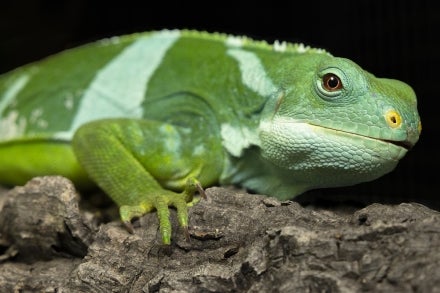Image

 There are 12
countries that contain sections of West African forest
There are 12
countries that contain sections of West African forest

 The West African Forest receives 80 inches of rain per year
The West African Forest receives 80 inches of rain per year
Croc of the Rocks
An iconic denizen of the West African Forest habitat is the West African dwarf crocodile Osteolaemus tetraspis tetraspis. It may be one of the smallest crocodilian species, but it can still reach a length of about five feet. This timid crocodile’s mottled brown-to-black coloration helps it blend in with its surroundings, whether it is partially submerged in a log-filled swamp or stretching out on a low tree limb—using its surprising climbing ability. While West African dwarf crocodiles spend their days in the water or basking in the sun, they look for food at night and feed on crabs, frogs, fish, snails, and other small animals. Females are devoted moms, covering their eggs in warm leaf litter, guarding them until they hatch, and then protecting the tiny hatchlings from numerous predators, including birds, fish, mongooses, and even other crocodiles. African dwarf crocodiles are listed as Vulnerable on the International Union for Conservation of Nature (IUCN) Red List of Threatened Species.
 There are 11,048 plant and animal species native to the area
There are 11,048 plant and animal species native to the area
Making a Splash
While there is much to see in the West African Forest, its dramatic focal point is Rady Falls, a splashy, showering cascade that is nearly seven stories high. The falls rush down a rocky outcropping, and will be seen—and heard—from several places in the Zoo. Water used in Rady Falls is recycled and recirculated, making it an environmentally friendly, water-wise feature. Guests can even walk behind the falls into a cavern-like grotto, to get a one-of-a-kind view through a wall of tumbling water.




